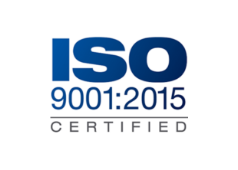Back to Blog
What is New in TA-STD-0017A?

After nearly a decade, TA-STD-0017 has been updated to TA-STD-0017A. This article takes a look at what is new in the revised standard and how the changes may impact acquisition programs moving forward as it is adopted as a requirement.
The TA-STD-0017A standard establishes general principles and descriptions of activities which comprise the Product Support Analysis (PSA) process. The PSA process is a systematic and comprehensive set of analyses that are conducted on an iterative basis through all phases of the product life cycle to satisfy supportability objectives.
The SAE Life Cycle Logistics Supportability (LCLS) Committee that owns this standard recognized that there were new technologies and supportability issues receiving attention in the Acquisition community and that were not adequately addressed in the current PSA process. Life Cycle Analysts in industry had a need for guidance on how to address these important logistics issues in acquisition phase programs. The revised standard now addresses Integrated Data Environment for Product Support, Advanced Manufacturing techniques (including Additive Manufacturing), In-Service Supportability, and Supportability Performance Assessment. There are also additional subsections to the previously existing activities to make the standard more robust, along with many updated sections and three new annexes.
One of the main objectives of this revision of the standard is to maximize the utilization of analyses and data results from other required system engineering programs to satisfy PSA input requirements. PSA data should be based upon, and traceable to, other system engineering data and activities, where applicable, including Reliability analysis, FMECA, Maintainability analysis, FRACAS, and Safety. Design and performance information (including support system performance) should be captured, disseminated, and formally controlled from the beginning of the design effort to inform product support resource planning, design tradeoff study inputs, and PSA documentation preparation.
This new standard was released in March 2022 by the SAE LCLS Committee, but it will likely appear infrequently in development program requirements for several more months as the DoD Acquisition Community reviews the impacts it will have on program cost and schedule. The following lists contains highlights of the changes in the revision:
- One of the significant differences introduced in TA-STD-0017A includes the addition of 5 pages expanding guidance provided by the original TA-STD-0017, which was initially created to replace the void in PSA guidance that was left when MIL-STD-1388-1A was cancelled.
- An immediately noticeable change is that PSA Activities are now grouped and labeled under letter coding with supporting activities being numbered. This will facilitate further document updates without having to revise the current paragraph structure.
- An Annex was added to describe the PSA Activities during the different phases of the life cycle, in addition to a figure that outlines the major activities applicable during the entire life cycle.
- A cross-reference was also added to the document as an annex that maps these newly numbered activities to the predecessor guidance document and the original MIL-STD-1388-1A.
- This revision of the standard also incorporates sections that address Supportability as it relates to operational phase performance, planning, and change management.
Additional emphasis was added to the document regarding support system Standardization as an effective tool for reducing support burdens. Through the utilization of existing product support resources and spare parts conforming to industry or military specifications it is possible to substantially reduce life cycle cost, enhance readiness, minimize the impact of introducing the new system/equipment, and decrease the logistics footprint of the operational unit using the new system/equipment.
What does this mean to me?
Several sections were updated to incorporate lessons learned from Practitioners and Program Managers who are focused on making PSA more visible, meaningful, and effective. These updates include particular attention to quantification and measurement of supportability characteristics as they relate to system operational performance. The TA-STD-0017A revisions successfully make the standard more understandable through using concise language, more practical through using “how to” examples, and more consistent with other revised standards.
Article Authored by Stephen Brunner and Blake Anderson






